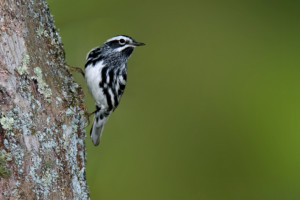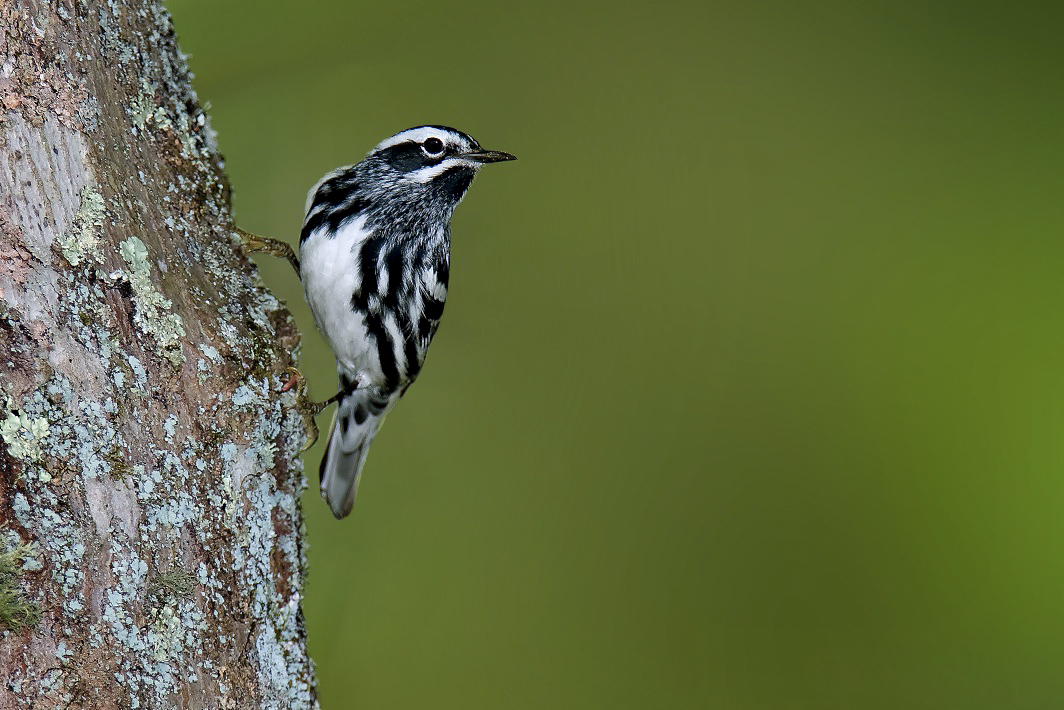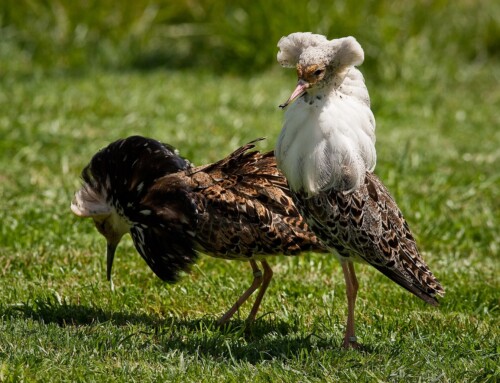 LINKED PAPER
LINKED PAPER
Social information affects prospecting, but not settlement, by Black-and-white Warblers (Mniotilta varia). Mann, J. T., Mann, E. A., & Clark, A. B. 2021. IBIS. DOI: 10.1111/ibi.12921. VIEW
We are regularly faced with difficult choices. For example, which Netflix-series or movie should you watch today? To solve this arduous problem, you might ask your friends for some advice, or you just explore the options on your own. Birds are faced with a similar situation when they have to select their breeding sites. They could make the choice on their own by exploring the area or they could rely on signals from conspecifics to pick the best breeding spot (Danchin et al. 2004). A recent study took an experimental approach to figure out how Black-and-white Warblers (Mniotilta varia) use environmental and social information in decision-making.
Playback
During several breeding seasons, a team of ornithologists monitored the habitat use of Black-and-white Warblers at three locations: the Binghamton University Nature Preserve, the Friends of Salt Springs State Park and the Pennsylvania State Gamelands. Here, they meticulously noted down the abundance of this bird species during the entire breeding season, from the early prospecting phase to the period after settlement. At some sites, the researchers played the sounds of Black-and-white Warblers to see how this social information would influence the selection of a breeding sites. Sites without playback systems were used as control sites.

Figure 1. During the prospecting phase, warblers were more abundant at sites with playback sounds, suggesting that they use social information in their choices (left figure). This effect disappeared after settlement (right figure).
Vegetation Cover
This experimental set-up revealed that birds focused mainly on the understory vegetation cover when selecting sites without playback sounds – preferring sites with dense vegetation (Conner et al. 1983). When playback sounds were added to the mix, the behavior of the birds changed. Male warblers were more abundant at the playback sites during the prospecting period, suggesting that they prioritized social information over personal information about habitat structure (Betts et al. 2008). After settlement, however, the effect of the playback sounds disappeared. This finding suggests that Black-and-white Warblers modified their initial decisions during the period. Whether this behavioral change can be attributed to social or environmental information remains to be determined. Nonetheless, this study nicely shows how birds use different sources of information to make important decisions. Conservationists could use this knowledge to attract endangered bird species to particular habitats where they can be better protected (Anich & Ward 2017).
References
Anich, N.M. & Ward, M.P. (2017). Using audio playback to expand the geographic breeding range of an endangered species. Diversity and Distributions 23: 1499– 1508. VIEW
Betts, M.G., Hadley, A.S., Rodenhouse, N. & Nocera, J.J. (2008). Social information trumps vegetation structure in breeding-site selection by a migrant songbird. Proceedings of the Royal Society B: Biological Sciences. 275: 2257– 2263. VIEW
Conner, R.N., Dickson, J.G., Locke, B.A. & Segelquist, C.A. (1983). Vegetation characteristics important to common song birds in east Texas. The Wilson Bulletin 95: 349– 361. VIEW
Danchin, E., Giraldeau, L.A., Valone, T.J. & Wagner, R.H. (2004). Public information: from nosy neighbours to cultural evolution. Science 305: 487– 491.. VIEW
Image credits
Top right: Black-and-white Warbler (Mniotilta varia) | William H. Majoros | CC BY-SA 3.0 Wikimedia Commons
Blog posts express the views of the individual author(s) and not those of the BOU.
If you want to write about your research in #theBOUblog, then please see here




